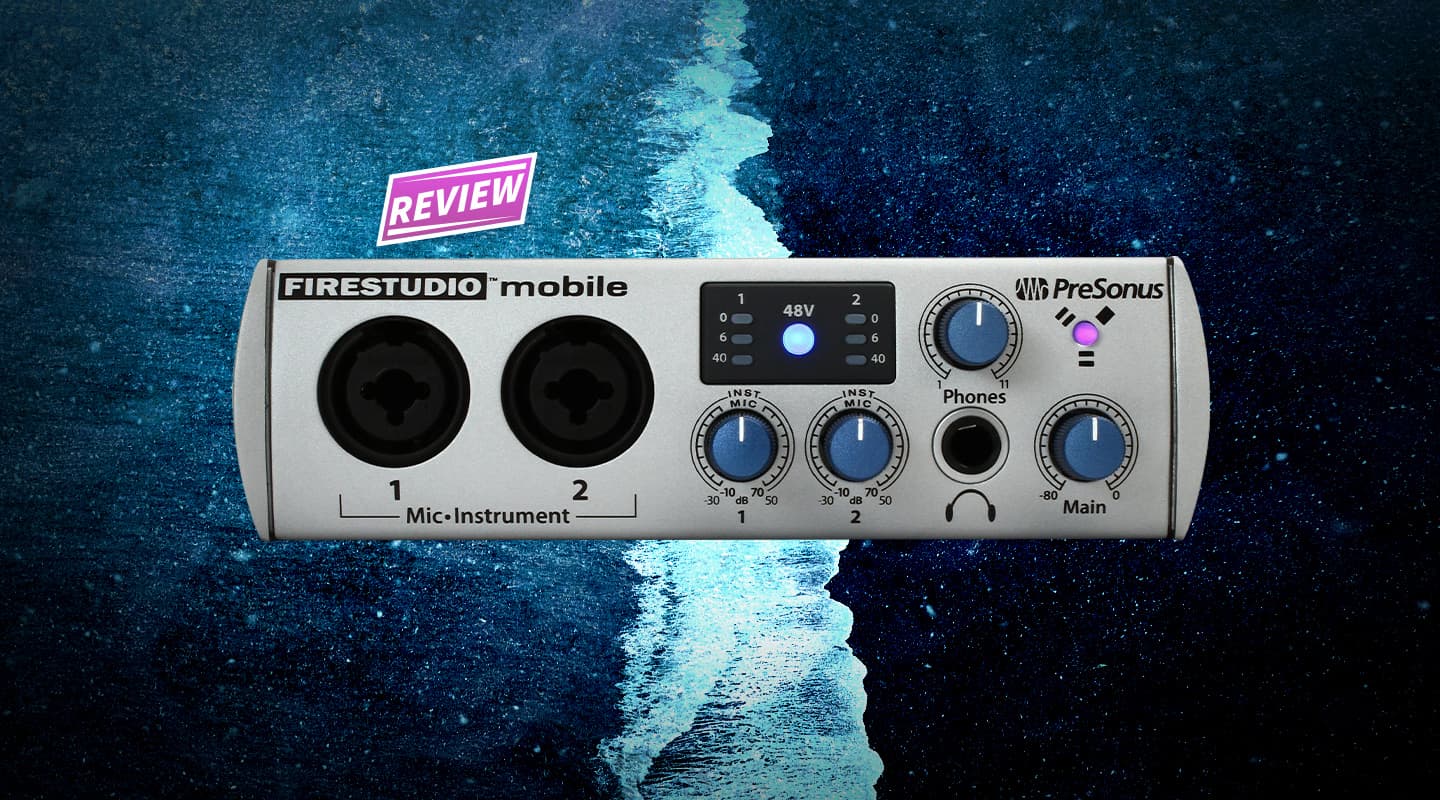
Review: Presonus Firestudio Mobile
This new interface may be small… but then, that’s the whole point.
For the third AT issue in a row I’ve been tasked with the evaluation of a new portable audio interface. I’d be starting to worry about being typecast by now if I didn’t already know just how many of these little blighters keep crawling under the AT office door. It’s like a plague. There’s only so much you can say about these bus-powered interfaces, of course, and in the end each one has its specific advantages and shortcomings, despite most marketing hype generally banging on about product X’s ‘universal appeal’. If you’re in the market for a portable Firewire interface, hopefully I’ll be able to help you ascertain where this newbie fits into the spectrum.
JUST THE FACTS
The Presonus Firestudio Mobile is the latest addition to the popular and ever expanding Firestudio series of audio interfaces. In this case, however, it seems the Firestudio Mobile is less a brand new product and more an upgrade from the Presonus Firebox, released back in 2005. Both are very compact Firewire bus-powered units, and each has a pair of microphone/DI channels and support for 24-bit/96k audio. While the Firebox boasted four analogue inputs and eight outputs, the new Firestudio Mobile has flipped this balance, providing eight inputs and four channels of output. Add to this MIDI and digital (S/PDIF) I/O via a nine-pin D-sub breakout cable and you’ve squeezed an exceptional channel count out of a box smaller than your favourite fuzz pedal (140mm x 140mm x 45mm).
It may be small but the Firestudio Mobile is a solid number weighing in at 2kg. The metal chassis is stylishly finished with softly curved edges and rounded ribbed sides. While it looks great the design of the side panels does, however, prevent stable balancing of the interface on its edge – something I would have liked to do… but perhaps the manufacturer would prefer you didn’t. The only new addition to the front panel of the Mobile is a pair of three-LED level indicators for the mic/instrument channels. While these are handy for immediate feedback on an active connection or overloaded input, their simplicity doesn’t seem to justify the real estate they occupy. Saying that, I much prefer to have them than not.
TO THE MAX
Two Amphenol combo connectors provide front panel access to channels 1 and 2. These feature Presonus’s upgraded XMAX microphone/instrument preamplifiers. The XLR input provides –10 to 70dB of gain (with switchable 48V phantom power) while the ¼-inch TS jack inputs provide –30 to 50dB. Controlled via the indented gain controls (which feel fantastic paired with the now standard pale blue metallic Presonus knobs), the preamps deliver what, on first listen, might be considered a somewhat ‘dark’ tone. The XMAX channels avoid the modern tendency towards sizzle and hype, instead providing a subtly filtered top-end. There is, however, no shortage of detail from both the mic and DI inputs, and the low-end is extensive without ever feeling boomy. While direct comparison with other preamps left me yearning for just a hint more air and midrange presence, it was only when I combined a number of channels that I truly ‘heard the light’. The Presonus recordings blended in a way that somehow already felt mixed, and the sense of darkness was replaced by a smooth finish.
Analogue inputs 3 to 8 can be accessed via TRS jacks on the rear of the interface. The Main outputs (1 & 2) are also located here. The Phones output on the front panel doubles as unbalanced outputs 3 & 4 and therefore has its own dedicated software output and monitor mixer. Making for a pleasant change, the headphone output has more than enough power and I’ve really been enjoying the defined representation when in the cans. The Main balanced outputs deliver a maximum +10dBu from a full-scale digital signal, and while this will be sufficient when driving your powered monitors it’s likely to be somewhat anaemic if you’re intending to drive any vintage outboard. The Phones output goes up to a Spinal Tap-esque 11 – for when 10 just isn’t quite loud enough. Exactly what this feeds (in decibels) to the unbalanced line outputs, however, is hard to determine.
NEED TO KNOW

SOFT CENTRE
With all the incremental improvements from the Firebox, including the preamps and new converters, featuring the widely used Jet-PLL jitter reduction, it’s easy to overlook the important fact that this interface is a Firestudio. As such it makes use of the easy to use and powerful Universal Control driver system. Advertised as ‘plug and play’, I indeed found myself up and running almost straight out of the box. Even the sometimes finicky Cakewalk Sonar Producer automatically recognised the interface and assigned its channels to existing projects (a first for me). The monitor mix windows for each stereo output are a delight and should be a doddle for even the least proficient user, with favourite configurations saveable as presets. As a bonus, multiple Firestudio products can be chained to combine their functionality under a single driver installation and the Mobile can also be daisy-chained with the StudioLive.
Although there’s nothing about the Firestudio Mobile that’s earth-shatteringly new, I’m not sure there are many alternatives that can provide quite so much in such a small and sturdy package. If you’re set to go mobile that may be all the encouragement you need.
















RESPONSES